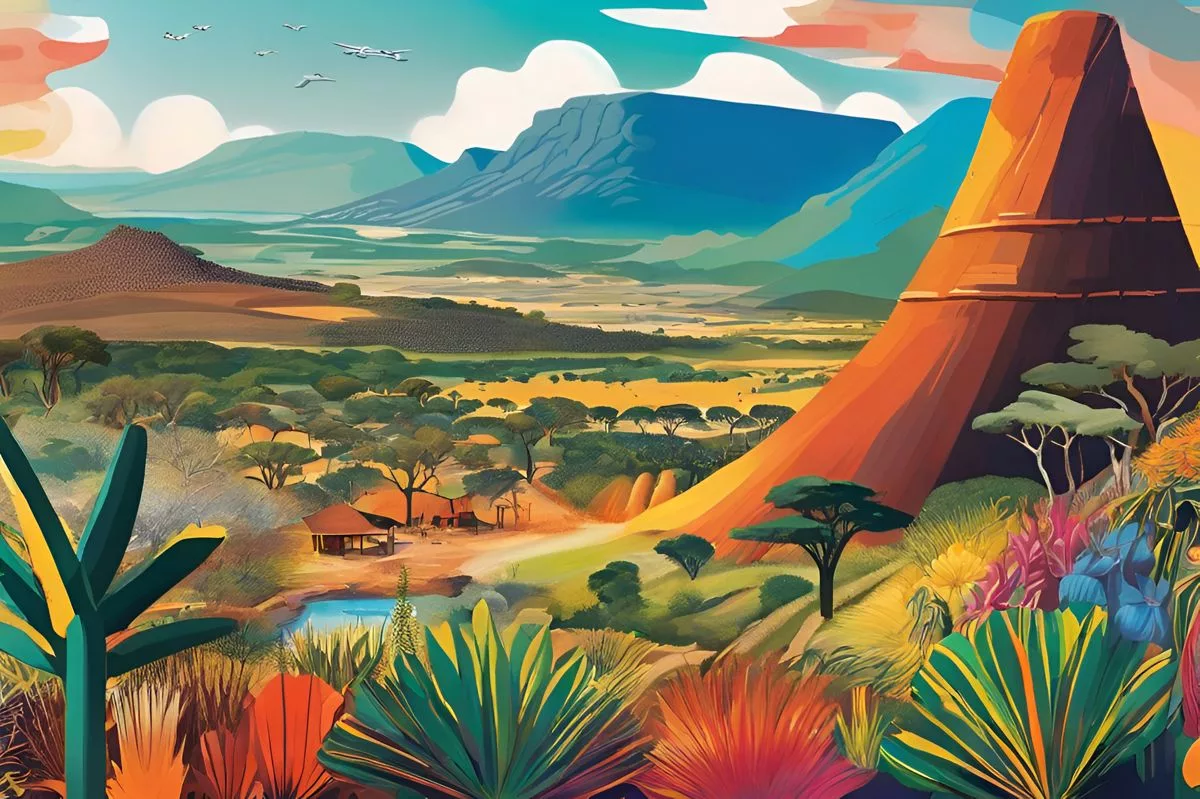In her first 100 days as South Africa’s Minister of Tourism, Patricia de Lille has launched exciting plans to boost travel and create jobs. She aims to attract 15 million tourists by 2030 and has improved the visa process to make it easier for visitors from key countries. With a focus on teamwork and community growth, her initiatives include new tourism projects that celebrate South Africa’s rich culture. De Lille’s vibrant leadership promises a bright future for the country’s tourism, making it a vital part of economic recovery.
What are the key achievements of Patricia de Lille in her first 100 days as Minister of Tourism?
In her first 100 days, Patricia de Lille has prioritized tourism growth by:
- Engaging in strategic dialogues to align with the Government of National Unity’s goals.
- Setting an ambitious target to attract 15 million tourists by 2030.
- Revamping the visa application process to enhance accessibility for key markets.
These initiatives aim to boost South Africa’s tourism sector and contribute significantly to economic recovery.
A New Era of Leadership
In the fast-evolving realm of tourism, Patricia de Lille’s initial 100 days as South Africa’s Minister of Tourism have been undeniably influential. As the sole female political party leader within the Government of National Unity (GNU), representing the GOOD Party, she has embarked on a mission driven by innovation and ambition. Her tenure is marked by a strategic focus on growth and transformation, setting a new course for the tourism sector.
De Lille’s vision aligns seamlessly with the GNU’s overarching mission, which revolves around three pivotal objectives: fostering inclusive economic growth and job creation, addressing poverty and living costs, and establishing a capable, ethical, and developmental state. These priorities are not mere rhetoric but are woven into actionable strategies aimed at tangible outcomes.
Shortly after her reappointment in July, de Lille, alongside the Deputy Minister, engaged in comprehensive dialogues with the Department of Tourism and SA Tourism. These discussions aimed to align the internal workforce with the GNU’s strategic priorities, underscoring the urgency to elevate tourism as a cornerstone of economic recovery and job creation. This alignment is essential for South Africa’s tourism sector to significantly contribute to the nation’s economic revival.
Building Synergy and Setting Ambitious Goals
De Lille’s proactive approach manifested through a joint lekgotla held on August 1 and 2, which fostered synergy between the Department of Tourism and SA Tourism. This gathering provided a platform for honest reflection and strategic planning for the next five years. The ambitious target of welcoming 15 million tourists by 2030, as outlined in the National Development Plan (NDP), was emphasized. This vision seeks to unlock the full potential of South Africa’s tourism sector, with action plans integrated into the government’s Medium-Term Development Plan.
Achieving these targets demands a multifaceted approach, involving collaboration with social partners, including the private sector and local communities. De Lille has been a key player in improving the visa regime and boosting direct flights to and from South Africa. The establishment of an Air Access Tourism Marketing arm within SA Tourism, as mandated by the Cabinet, underscores this commitment. Additionally, efforts to streamline the tour operator licensing process aim to attract more operators to the country.
Investment in infrastructure is another crucial focus, reflecting South Africa’s cultural and heritage richness. This aligns with the department’s commitment to building a capable state by implementing demand-driven skills programs and leveraging technology, such as AI, to innovate and enhance tourism offerings. The formulation of a comprehensive five-year plan is underway, aligning with the GNU, NDP, and other tourism strategies, to shape a resilient tourism sector.
New Horizons and Strategic Initiatives
In a bold move, the Department of Tourism recently gazetted the White Paper on the Development and Promotion of Tourism, offering a clear roadmap for future tourism development. This policy emphasizes sustainability, competitiveness, and inclusiveness, leveraging digital technology and fostering partnerships that address the country’s social imperatives. The aim is to make a meaningful contribution to the broader economy, employment, and entrepreneurship, ensuring resilience in the tourism sector.
Astro-tourism emerges as an exciting niche market, with South Africa capitalizing on its unique astronomical advantages. The draft National Astro-Tourism Strategy, developed in collaboration with the Department of Science and Innovation, positions South Africa as a premier astro-tourism destination. By focusing on infrastructure development and community transformation, astro-tourism is set to drive economic growth in rural areas like the Karoo.
On the financial front, the Department of Tourism received a clean audit for 2023/24, reflecting sound fiscal management. Meanwhile, SA Tourism is working on remedial measures to address its qualified audit status. Efforts are also underway to streamline the visa application process, particularly for key markets like India and China, through the Trusted Tour Operator Scheme (TTOS).
Infrastructure and Community Development
Tourism performance indicators are promising, with international tourism spend contributing R95 billion and domestic tourism generating R121 billion in 2023. The sector’s employment prospects are bright, with projections of 1.7 million jobs by 2024. The sector’s contribution to GDP, surpassing industries like construction and transport, highlights its economic significance.
The department has launched various infrastructure projects across the country, focusing on community upliftment and geographic spread. Notable projects include the Mapate Recreational Social Tourism Facility and the LP Tisane facility, both in Limpopo. These initiatives represent significant investments in enhancing the tourism landscape.
Moreover, the Tourism Incentive Programme remains a cornerstone of the department’s strategy, supporting the sustainability and inclusive growth of small and medium enterprises (SMEs). Programs like the Green Tourism Incentive Programme (GTIP) and the Market Access Support Programme (MASP) offer financial support for tourism businesses to adopt sustainable practices and access new markets.
Future Prospects and Global Engagement
The relaunch of the Tourism Equity Fund in 2023 aims to provide capital support to new and existing businesses, fostering equity acquisition and new project development in the sector. However, administrative delays remain a challenge, prompting calls for urgency in the application process.
To enhance service delivery, the department prioritizes digital transformation, utilizing technology and AI to boost efficiency. The National Tourism Careers Expo (NTCE) further illustrates the department’s commitment to nurturing human capital, attracting thousands of learners and educators to explore tourism as a viable career path.
SA Tourism, in its first 100 days, achieved an impressive 98% success rate for its quarterly targets. Initiatives like Sho’t Left Travel Week have effectively engaged local tourists, encouraging them to explore domestic destinations. International outreach efforts, including participation in key tourism expos, are strengthening South Africa’s global presence.
As South Africa prepares to assume the G20 Tourism Chairmanship in December, the country is poised to leverage this platform to showcase its tourism potential. De Lille’s engagements with global tourism stakeholders underscore the importance of sustainable and inclusive tourism growth.
In conclusion, Patricia de Lille’s first 100 days as Minister of Tourism reflect a robust and comprehensive approach to revitalizing South Africa’s tourism sector. Her leadership is characterized by strategic initiatives that balance immediate needs with long-term growth, ensuring that tourism remains a vital contributor to the nation’s economy. Her dynamic strategies and commitment to innovation ensure that the sector is well-positioned for future success.
FAQ
What are the primary goals set by Patricia de Lille for South Africa’s tourism sector?
Patricia de Lille has set an ambitious goal to attract 15 million tourists by 2030. This target aligns with the National Development Plan and aims to unlock the full potential of South Africa’s tourism sector, contributing significantly to economic recovery and job creation.
How has the visa application process been improved under Patricia de Lille’s leadership?
Patricia de Lille has revamped the visa application process to enhance accessibility for key markets, particularly focusing on countries like India and China. This improvement aims to facilitate easier travel for tourists and boost visitor numbers to South Africa.
What initiatives has Patricia de Lille introduced to promote community growth through tourism?
De Lille’s initiatives include various infrastructure projects aimed at community upliftment, such as the Mapate Recreational Social Tourism Facility and the LP Tisane facility in Limpopo. Additionally, the Tourism Incentive Programme supports small and medium enterprises (SMEs) to adopt sustainable practices and grow within the tourism sector.
How does Patricia de Lille plan to address sustainability in tourism?
The recently gazetted White Paper on the Development and Promotion of Tourism emphasizes sustainability, competitiveness, and inclusiveness. The strategy includes leveraging digital technology and fostering partnerships that align with the country’s social imperatives to ensure a resilient tourism sector.
What new markets is South Africa exploring in tourism, and how?
One exciting initiative is the development of the National Astro-Tourism Strategy, which aims to position South Africa as a premier destination for astro-tourism, capitalizing on its unique astronomical advantages. This approach focuses on infrastructure development and aims to drive economic growth in rural areas, such as the Karoo.
How successful has the tourism sector been in terms of economic contribution and job creation?
The tourism sector has shown promising performance indicators, contributing R95 billion from international tourism spend and R121 billion from domestic tourism in 2023. Projections indicate that the sector could support 1.7 million jobs by 2024, highlighting its significant contribution to South Africa’s GDP and economic recovery.












